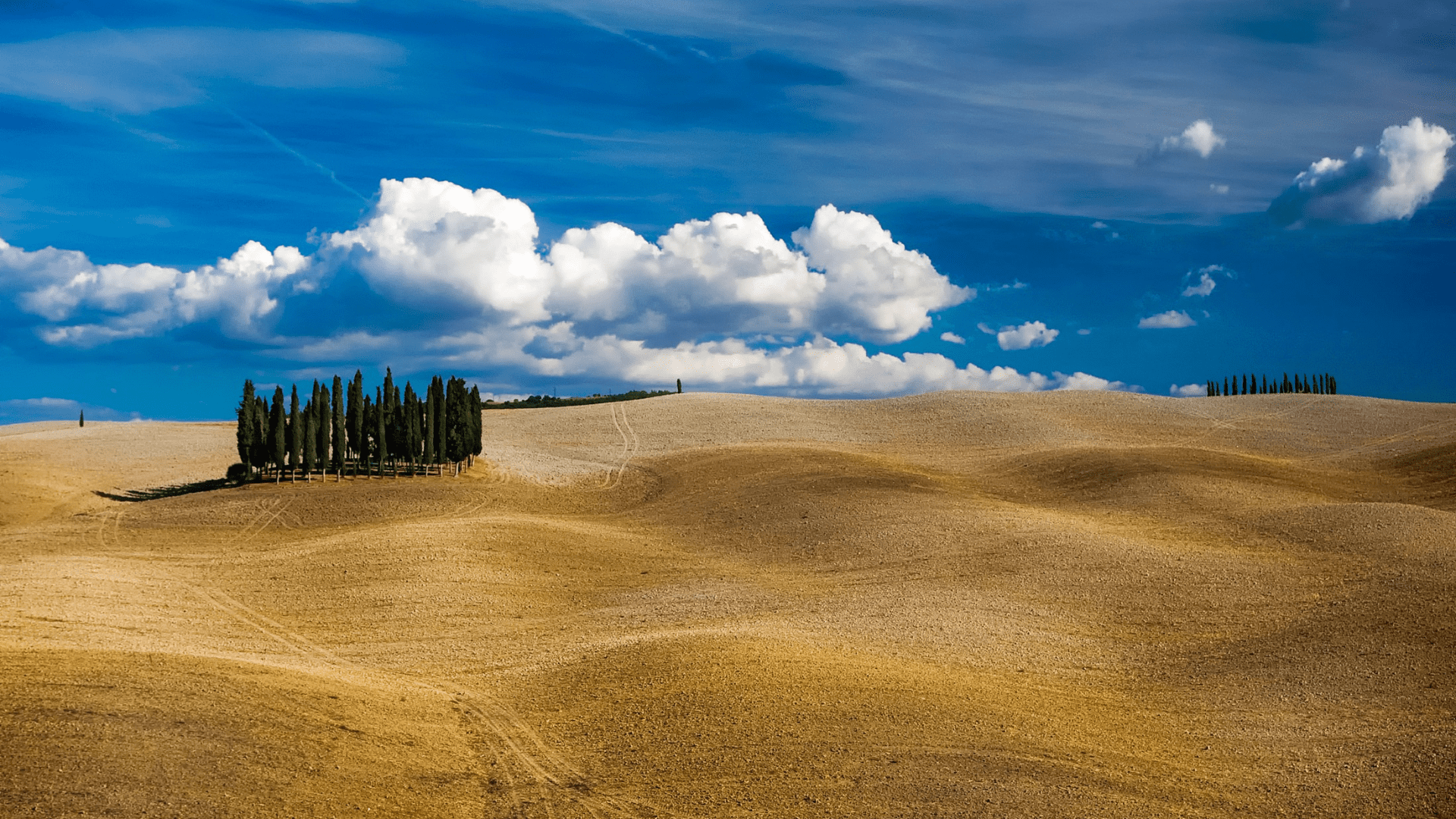Tuscany

Tuscany
Located in central Italy, stretching from the Apennines to the Tyrrhenian Sea, Tuscany is an undisputed protagonist on the world tourism scene. The landscapes, artistic heritage and important cities - first and foremost Florence - make this region unique in the world.
In this territory, nature presents many different faces, starting with the coastline that alternates long, sandy beaches, such as Versilia, with rocky cliffs and steep headlands.
Incomparable are the islands of the Tuscan Archipelago, surrounded by Mediterranean vegetation, crystal clear sea and rich seabed.
Panoramas of unspoiled nature in Tuscany can be seen in the Apuan Alps and in numerous protected areas, such as the Orbetello Lagoon, which is home to numerous species of migratory birds, including pink herons.
But Tuscany's most characteristic landscapes are those that harmoniously blend the beauty of nature with the millennial presence of man.
The splendid Gulf of Baratti and the sites of Vetulonia and Pitigliano hold necropolis and evidence of Etruscan civilization, while Roselle and Cosa restore memories of the Roman age.
And then, medieval villages, towns rich in history, castles and systems of fortifications, small rural churches - the so-called 'pievi' - and evocative abbeys, such as that of Sant'Antimo, are present throughout the territory and their profiles stand out in the landscapes of the Crete Senesi, Val d'Orcia, Garfagnana, Chianti and Maremma.
Finally, numerous are the sources of well-being: Montecatini, Saturnia, Montepulciano, Monsummano and Bagno Vignoni, which, thanks to their thermal waters and centers equipped for all kinds of treatments, offer relaxing vacations.
Numerous, therefore, are also the "excellences" of Tuscany, which have been recognized by UNESCO as World Heritage Sites, starting with Florence.
Innumerable still are the many characteristic aspects of this region, but special mention should be made of the Val d'Orcia, also under Unesco protection, for the beauty of its countryside and views that inspired so many Renaissance artists.
And, of course, also the never enough extolled land of Chianti, with its incomparable landscapes and mother of an ancient rural civilization that to this day continues in the highly appreciated production of supreme wines that make its glory all over the world.
Pisa brings together in Piazza dei Miracoli its main monuments, including the famous Leaning Tower, creating an artistic space of immense value, protected by UNESCO.
Another extraordinary destination is Siena with its medieval center, also listed as a Unesco site, culminating in the characteristic Piazza del Campo, scene of the city's world-famous Palio.
Pienza is the "ideal city" desired and created by Pope Pius II on the basis of Renaissance cànoni. The scenic layout of the spaces and the richness of the palaces make it a treasure trove of art, included in the UNESCO list.
Prominent among the region's small towns is San Gimignano, a medieval village characteristic for its towers and tower-houses, recognized as a World Heritage Site.
Prominent among the region's small towns is San Gimignano, a medieval village characteristic for its towers and tower-houses, recognized as a World Heritage Site.
But above them all, Florence, the ancient Seignory of the Medici family, world-famous is universally known as the cradle of culture and art: a veritable open-air museum that holds countless monuments, including the Duomo with Giotto's bell tower, Santa Maria Novella, Palazzo Vecchio, and the Uffizi Gallery with masterpieces unique in the world.
But Florence's charm is also linked to the Lungarno, the characteristic Ponte Vecchio, the artisan stores that enliven the narrow streets of the center, and the rolling hills that surround it.